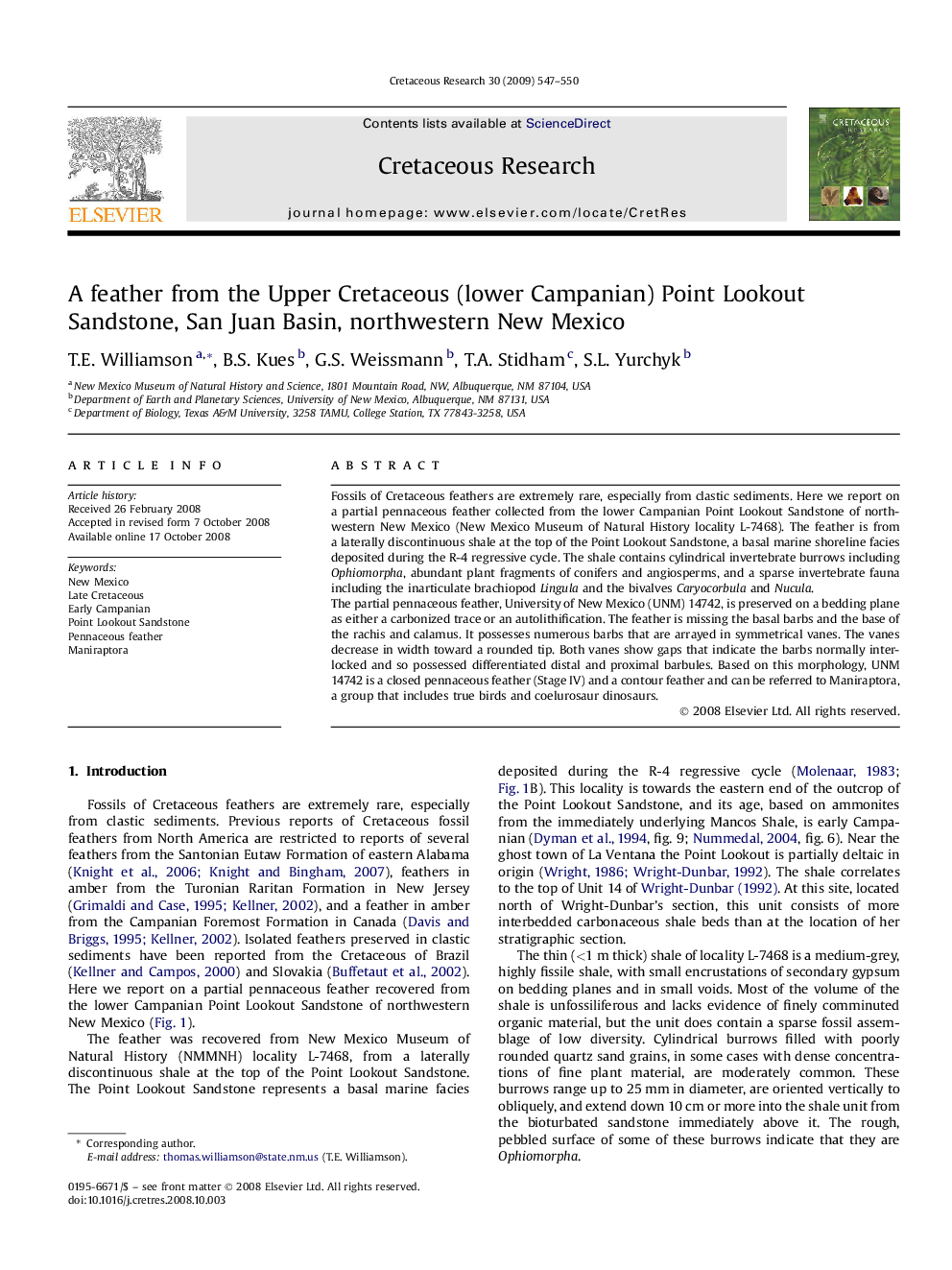| Article ID | Journal | Published Year | Pages | File Type |
|---|---|---|---|---|
| 4747523 | Cretaceous Research | 2009 | 4 Pages |
Fossils of Cretaceous feathers are extremely rare, especially from clastic sediments. Here we report on a partial pennaceous feather collected from the lower Campanian Point Lookout Sandstone of northwestern New Mexico (New Mexico Museum of Natural History locality L-7468). The feather is from a laterally discontinuous shale at the top of the Point Lookout Sandstone, a basal marine shoreline facies deposited during the R-4 regressive cycle. The shale contains cylindrical invertebrate burrows including Ophiomorpha, abundant plant fragments of conifers and angiosperms, and a sparse invertebrate fauna including the inarticulate brachiopod Lingula and the bivalves Caryocorbula and Nucula.The partial pennaceous feather, University of New Mexico (UNM) 14742, is preserved on a bedding plane as either a carbonized trace or an autolithification. The feather is missing the basal barbs and the base of the rachis and calamus. It possesses numerous barbs that are arrayed in symmetrical vanes. The vanes decrease in width toward a rounded tip. Both vanes show gaps that indicate the barbs normally interlocked and so possessed differentiated distal and proximal barbules. Based on this morphology, UNM 14742 is a closed pennaceous feather (Stage IV) and a contour feather and can be referred to Maniraptora, a group that includes true birds and coelurosaur dinosaurs.
